Migrating to Google Docs or Zoho Docs
Thinking about an online office suite such as Google or Zoho? Google's minimalist interface is refreshingly annoying, or possibly annoyingly refreshing. Refreshing because the menus are short and simple, rather like in a fast-food restaurant with limited selections. Annoying for exactly the same reason. It's easy to bump into a limitation that means you can't do what you want to do. Google Docs does things the average office suite can't do easily, though, and the day will come when applications such as these become mainstream.
All of the illustrations here are from Google Docs. Zoho offers similar functionality.
Click a small image for a larger view. Click the larger view to close it.
The first thing you'll notice is the single interface to all of the applications. This is handy because you won't have to open a spreadsheet application and a word processor and a graphics program and a presentations program. They're all in a single location. Google Docs has no image editor and no database application.
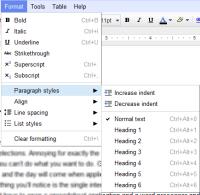 If you're used to creating highly formatted text in your word processor, Google's document editor will shock you with the sparse number of paragraph styles available: Normal text and 6 levels of headings. You can create bulleted or numbered lists, indent paragraphs, and set the justification to left, center, right, or full. And that's it. There's no control over the bullet or numbering styles.
If you're used to creating highly formatted text in your word processor, Google's document editor will shock you with the sparse number of paragraph styles available: Normal text and 6 levels of headings. You can create bulleted or numbered lists, indent paragraphs, and set the justification to left, center, right, or full. And that's it. There's no control over the bullet or numbering styles.
 And when it comes to selecting a typeface, your choices are limited: Just 18 faces, most of which can be set roman, italic, bold, and bold italic.
And when it comes to selecting a typeface, your choices are limited: Just 18 faces, most of which can be set roman, italic, bold, and bold italic.
Neither of these limitations will be a concern to anyone who is using the document editor to write a letter or even to prepare an article that will eventually be ported to Adobe InDesign for formatting and output to a printing press. In some ways, this is actually good because it limits the number of ways that a user can convert what would otherwise be a readable document into an ugly mess.
Those of us who are old enough to remember when computers and applications crashed frequently may end paragraphs by pressing Enter and then Ctrl-S to save the document. This ensures that you'll never lose more than a single paragraph. Although pressing Ctrl-S in Google Docs does save the document, there's little point in doing this because the application automatically saves the document every few seconds.
Sharing Documents and Collaborative Editing
Three factors are sufficiently powerful to ensure that Google Docs or Zoho or Microsoft Live or some other similar system will eventually supplant or at least coexist with desktop applications.
Availability: Google Docs files are available from any computer with an Internet connection. That means that you can access the file from your office, your home, the library, or a friend's home. You don't have to remember to take the file with you or to perform any overt action. The file will just be there when you need it.
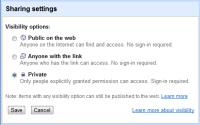 Sharing: It's possible to make the document readable by others and you can allow others to edit the document. Sharing involves assigning read or write privileges per document to those that you want to be able to read the document or edit it. You can also make the document available publicly.
Sharing: It's possible to make the document readable by others and you can allow others to edit the document. Sharing involves assigning read or write privileges per document to those that you want to be able to read the document or edit it. You can also make the document available publicly.
 Collaboration: Imagine that you've traveled from Ohio to California to teach at a conference and that your Arizona client is currently in New York to teach at another conference. (I can imagine this because that's exactly what happened to me in about 1997.) Instead of e-mailing documents back and forth as we did then, today we could both bring up the document on our screens and each of us could edit it simultaneously.
Collaboration: Imagine that you've traveled from Ohio to California to teach at a conference and that your Arizona client is currently in New York to teach at another conference. (I can imagine this because that's exactly what happened to me in about 1997.) Instead of e-mailing documents back and forth as we did then, today we could both bring up the document on our screens and each of us could edit it simultaneously.
These are the kinds of features that will be increasingly important in the future and it's why companies such as Microsoft and Adobe are embedding collaboration tools in applications such as Office 2010 and Creative Suite CS5.
Upload Some Documents
 Google Docs offers the ability to upload existing documents for editing. If you have a recent file from a supported program, this will work as expected. But if you try to upload an older document (for example a file from WordPerfect 5 (DOS) or WordPerfect 7 (Windows), you won't have any luck. Likewise, files from early versions of Word or files from most of the word processors that no longer exist.
Google Docs offers the ability to upload existing documents for editing. If you have a recent file from a supported program, this will work as expected. But if you try to upload an older document (for example a file from WordPerfect 5 (DOS) or WordPerfect 7 (Windows), you won't have any luck. Likewise, files from early versions of Word or files from most of the word processors that no longer exist.
The current version of Word can open the two antique WordPerfect files, so if I needed to add them to a Google Docs collection, it could be done.
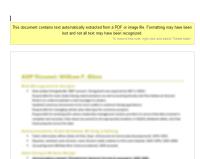 Google Docs can also extract the text and images from Adobe PDF documents. The translation is surprisingly good.
Google Docs can also extract the text and images from Adobe PDF documents. The translation is surprisingly good.
 Upload limitations are similar for other document types, too. I have a spreadsheet that includes columns for numbers in decimal, binary, octal, and hex. The sheet also shows the printing characters in standard typefaces along with specific faces such as Symbol and Wingdings. In Google Docs, this spreadsheet is useless.
Upload limitations are similar for other document types, too. I have a spreadsheet that includes columns for numbers in decimal, binary, octal, and hex. The sheet also shows the printing characters in standard typefaces along with specific faces such as Symbol and Wingdings. In Google Docs, this spreadsheet is useless.
 More standard workbooks, such as the one I compiled when shopping for a car in 2009, displays accurately in both Excel and Google Docs.
More standard workbooks, such as the one I compiled when shopping for a car in 2009, displays accurately in both Excel and Google Docs.
Download All Documents
 When you need to use the document on your local computer or if you want to save a local backup copy, use the File Menu and select Download As. For word processor documents, the choices are ODT (Open Office), PDF, RTF (the universal translation format), plain text, Word, and HTML. The other applications offer equivalent choices for their data types.
When you need to use the document on your local computer or if you want to save a local backup copy, use the File Menu and select Download As. For word processor documents, the choices are ODT (Open Office), PDF, RTF (the universal translation format), plain text, Word, and HTML. The other applications offer equivalent choices for their data types.
Five More Free Apps You Should Have
It's important to use the very best applications even if you must occasionally pay less for them than you might expect. Some might even be free. These are some of the free applications that I insist on having.
MalwareBytes
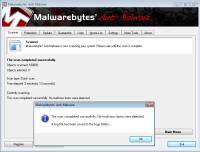 You have an antivirus program already. You're careful about the links you follow and even more careful about the applications you open. So why do you need MalwareBytes?
You have an antivirus program already. You're careful about the links you follow and even more careful about the applications you open. So why do you need MalwareBytes?
Because even the best antivirus application doesn't catch everything. Because you might make a mistake. Because it's important to confirm that your computer doesn't harbor nastyware that somehow slipped by all of your defenses.
MalwareBytes doesn't run in the background. It doesn't interfere with your existing security applications.
Picasa
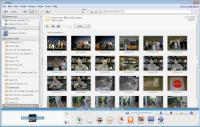 Even if you already have an application such as Photoshop or Lightroom, Picasa can be helpful. If you do have one of those other applications, you won't use Picasa to edit or organize your files, but it's the fastest and easiest way to review the files you have on disk.
Even if you already have an application such as Photoshop or Lightroom, Picasa can be helpful. If you do have one of those other applications, you won't use Picasa to edit or organize your files, but it's the fastest and easiest way to review the files you have on disk.
Download Picasa (now a Google application).
ImgBurn
 When you have files that you need to burn to a CD or a DVD, you'd probably want the process to be quick and easy. If so, ImgBurn is for you. Choose what you want to do (write an image file to the disc, create an image file from a disc, verify a disc, write files and folders to a disc, or create an image file from files and folders). For advanced users, there's a "discovery" mode that's used to test your drive and media together to see if you are creating high-quality burns.
When you have files that you need to burn to a CD or a DVD, you'd probably want the process to be quick and easy. If so, ImgBurn is for you. Choose what you want to do (write an image file to the disc, create an image file from a disc, verify a disc, write files and folders to a disc, or create an image file from files and folders). For advanced users, there's a "discovery" mode that's used to test your drive and media together to see if you are creating high-quality burns.
But the key point is this: The easiest way to get files from your computer to a CD or DVD is ImgBurn.
Format Factory
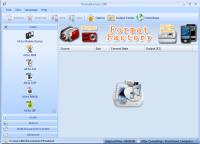 Here's the problem: You have an audio, video, or graphic file in one format but it needs to be in another format. The WMV file needs to be an AVI or the SWF should be an MP4. You'd like the WAV file to be an MP3 or WMA. The AAC file needs to be an OGG. The BMP should be a PNG or you want an ICO file and you have a GIF.
Here's the problem: You have an audio, video, or graphic file in one format but it needs to be in another format. The WMV file needs to be an AVI or the SWF should be an MP4. You'd like the WAV file to be an MP3 or WMA. The AAC file needs to be an OGG. The BMP should be a PNG or you want an ICO file and you have a GIF.
The answer is Format Factory.
Wussup Wita System?
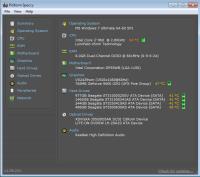 Piriform offers many useful application including CCleaner, Defraggler, and Recuva. The latest addition is Speccy, which provides an insight into your computer's inner workings.
Piriform offers many useful application including CCleaner, Defraggler, and Recuva. The latest addition is Speccy, which provides an insight into your computer's inner workings.
Adobe and the Iphone: Let's See What Develops
I still remember waiting for pictures. I'd come back from an event or a vacation with lots of rolls of film. The choices were to take those rolls of film to the darkroom, develop them, and make prints (many, many hours of smelly work); to send them to a professional lab (about a week to see the images); or take them to a local processor (anywhere between 1 hour and 3 days). Then digital cameras let me plug the camera into the computer as soon as I got home and start processing pictures. Now you don't even have to go home first.
Adobe Photoshop Express, already available for Android devices, now offers support for many Apple devices. It's compatible with the Iphone 3Gs, Iphone 4, 3rd and 4th generation Ipod Touch, and both the Ipad and Ipad 2 with IOS 4.2 or later. Photoshop Express is free but you may also be interested in the Adobe Photo Pack
Photoshop Express software lets you use gestures to edit and share photos from your mobile device.
 The Photo Pack application reduces noise, a common problem with all digital cameras and particularly with those found in phones and other portable devices. Adobe introduced greatly improved noise reduction technology with Lightroom 3 and Photoshop CS5. Some of that technology is present in the Photo Pack to smooth digital flaws. The image at the right (provided by Adobe) shows how this works. The left side of the image is the original and the right side of the image shows the noise reduction in action. Note that detail in the water is also smoothed, which may or may not be what you're looking for.
The Photo Pack application reduces noise, a common problem with all digital cameras and particularly with those found in phones and other portable devices. Adobe introduced greatly improved noise reduction technology with Lightroom 3 and Photoshop CS5. Some of that technology is present in the Photo Pack to smooth digital flaws. The image at the right (provided by Adobe) shows how this works. The left side of the image is the original and the right side of the image shows the noise reduction in action. Note that detail in the water is also smoothed, which may or may not be what you're looking for.
For some cameras, there's also a self-timer function. This does not work with the Ipad 2 camera at this time. With other devices, you can set timer to 3- or 10-second intervals.
Would you pay $29.95 for Adobe Photo Pack? You don't have to because it's just $4 from the Itunes store.
Short Circuits
NY Times Ducks Behind a Pay Wall
The same week that a study showed more people get their news from the Internet than from newspapers, the New York Times announced a limited pay wall that goes into effect on March 28. Those who subscribe to the paper version will receive the online version at no additional cost. Everyone else can read up to 20 articles per month for free. After that, it's $15 every 4 weeks.
That's every 4 weeks, not every month, so the annual fee isn't the $180 that you might expect but $195. By comparison, the Columbus Dispatch provides its online edition free to subscribers but charges everyone else $7.95 per month. At least the Times honestly states $15, not $14.95.
On Thursday, in a letter to all registered users of the NY Times website, publisher Arthur Sulzberger, Jr., said "This change comes in two stages. Today, we are rolling out digital subscriptions to our readers in Canada, which will enable us to fine-tune the customer experience before our global launch. On March 28, we will begin offering digital subscriptions in the U.S. and the rest of the world."
In reporting the story, reporter Jeremy Peters described a speech Sulzberger made to employees Thursday morning in which he said the change as in investment in the newspaper's future.
Google Patches a Chrome-Plated Bug
A zero-day exploit revealed in Google's Chrome Web browser got quick attention and a new version (10.0.648.134) for users on Windows, Mac, and Linux systems. The problem actually lies in the Adobe Flash Player and Adobe warned about the problem on March 14. Google updated the browser a day later. The update isn't automatic, though. As of the 17th, I still had 10.0.648.133 so I downloaded the update and by then the version was 10.0.648.151.
Adobe will update Flash Player 10 and earlier versions for Windows, Macintosh, Linux, Solaris, and Android.
According to Adobe, no known attacks exist to target either Adobe Reader or Acrobat but updates will be released next week for Acrobat X and 9 for Windows and Macintosh as well as for Reader X and 9 for Macintosh. Adobe Reader X Protected Mode can prevent the exploit, so that version won't be updated until June 14.

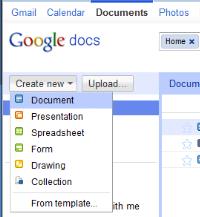

 The author's image: It's that photo over at the right. This explains why TechByter Worldwide was never on television, doesn't it?
The author's image: It's that photo over at the right. This explains why TechByter Worldwide was never on television, doesn't it?
